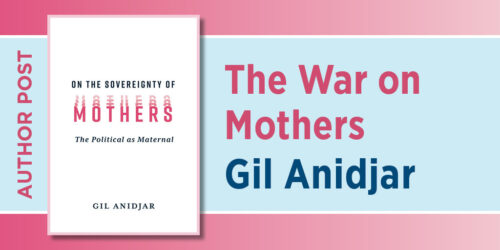Kimberly D. Acquaviva on The Handbook of LGBTQIA-Inclusive Hospice and Palliative Care

A year and a half after she published her first book about LGBTQIA-inclusive hospice and palliative care in 2017, Kimberly D. Acquaviva learned that her wife Kathy had ovarian cancer. When they were unable to find a local hospice with an LGBTQIA-inclusive nondiscrimination statement, let alone one whose staff had been trained to provide nondiscriminatory care to LGBTQIA people, Kim and Kathy made the choice to care for Kathy at home with outpatient palliative care instead of in-home hospice care. Kathy died at home six months after her diagnosis. Written for palliative care and hospice physicians, physician associates, advanced-practice registered nurses, registered nurses, social workers, counselors, and chaplains, and students in other health professions, The Handbook of LGBTQIA-Inclusive Hospice & Palliative Care is equally valuable for LGBTQIA laypeople seeking to understand the kind of care they should look for—and demand—if and when they need palliative care or hospice. In this Q&A, Acquaviva explains the importance of bridging disciplines, walks us through her collaborative cover design process, and offers advice on how to identify LGBTQIA-inclusive palliative care programs.
Q: You’re a social worker who teaches in a school of nursing and writes books intended to reach physicians, physician associates, advanced-practice registered nurses, registered nurses, social workers, counselors, and chaplains. What led you to a career bridging the disciplines?
Kimberly D. Acquaviva: When I was a student at the University of Pennsylvania, my curiosity pulled me toward a nontraditional sequence of degrees. I earned a bachelor’s degree in sociology because I wanted to understand social structures, patterns of human behavior, and how individuals experience both these things. I earned a master’s degree in social work because I wanted to understand how individuals interact with one another within families, communities, and organizations, and how those interactions can better support the dignity of all persons. I earned a PhD in human sexuality education because I wanted to understand how individuals navigate complex choices in their intimate relationships, balancing pleasure and risk using a nearly infinite variety of calculations.
Social work is firmly rooted in a set of core values: service, social justice, the dignity and worth of the person, the importance of human relationships, integrity, and competence. Those values have served as my North Star. Throughout my career, the decisions I’ve made—in my research, my teaching, my service, and my clinical work—have been driven by one overarching goal: to help people make things better. What that looks like varies. When I teach health policy, it means helping students learn how to advocate for policy changes that will make things better for the communities in which they live and the institutions in which they work. When I teach research, it means helping students learn how to design research studies to make things better for the patients, families, and communities they serve. When I serve on a committee at the University of Virginia, it means helping my colleagues and me find a path forward toward making things better for our students, staff, faculty, and the broader community. I’ve ended up bridging the disciplines in my career because those bridges are where I can help people make things better in ways that have a broader impact.
Q: Tell me about the cover of the book. What’s the story behind the design?
Acquaviva: I’ve always dreamed of winning AIGA’s 50 Books | 50 Covers award, so working with the book cover designer was something I was excited about from the minute I signed the contract with Columbia University Press. I had gotten an email on a Tuesday from Stephen Wesley, my editor, with a stock image that the cover designer had picked out because they thought it might be a good place to start for the cover of the book. Stephen wanted to get my thoughts before the cover designer took the image and ran with it. The image was a photograph of rainbow-colored pipe-cleaner people standing on a pile of books. The cover designer had a backlog of work and CUP’s seasonal catalog was going to print the following week, so I asked Stephen if I could send over three or four alternative designs for the cover designer to work with. Stephen said yes, so I spent a few hours playing around on Midjourney AI, generating images of a door with a Wes Anderson–esque vibe and color scheme because I wanted the cover to look and feel welcoming to readers. I ran several different designs by Stephen, and the two of us agreed on a favorite. I then found three illustrators via Fiverr, an online freelance services marketplace, and asked each of them to turn the Midjourney AI–generated image into an original illustration. Over the next twenty-four hours, each of them created an illustration based on the image I sent them. Mohammad Sohan’s illustration stood out as the best among the three, so I sent it over to Stephen. Next, Elliot Cairns, the cover designer, turned it into the illustration you see on the book cover today. I’m grateful the team at CUP was open to using such a collaborative process to design the cover of the book. The result is everything I hoped for. We’ll have to wait and see how it fares in the 50 Books | 50 Covers competition, though. Fingers crossed!
Q: You wrote The Handbook of LGBTQIA-Inclusive Hospice & Palliative Care using plain language rather than defaulting to what we might call academic prose. Why?
Acquaviva: There are some excellent books out there about hospice and palliative care. Many of them—like the Oxford Textbooks, for example—are written for a specific discipline using what I consider to be a scholarly or academic voice. There’s a need for books like that, but I wanted to write a book that would speak directly to hospice and palliative care professionals using language that’s accessible and that makes the change toward inclusive practice seem achievable to them. I wanted readers to come away with a sense that change is possible and that they know how to accomplish that change. Throughout my academic career, my goal has been to help healthcare professionals transform their practice. I wrote this book in plain language to lower one barrier to accomplishing that goal. Writing in plain language was difficult for me. I’m used to writing like an academic, instead of writing like a regular person. But it was also helpful: writing in plain language forced me to make sure my ideas were clear. I would love to see more authors use plain language when writing books directed toward audiences they hope to influence toward making some sort of change.
Q: What would you say to a hospice or palliative care professional who objects to providing LGBTQIA-inclusive care because of their religious beliefs?
Acquaviva: I would say to them, first of all, that I respect their religious beliefs and I would never ask them to change those beliefs. I would then ask them an important question about their scope of practice. I would ask, “Is it within the scope of practice for your particular discipline to be responsible for the destination of a person’s soul after they die?” There is no discipline that has this in its scope of practice, so their answer is going to be no. I would respond by saying that their obligation is to provide the best quality care they can to LGBTQIA individuals while they are alive on this Earth, and that they are welcome to hold whatever religious beliefs they have as long as those beliefs are never made apparent to the patients and families they serve. I’m not asking hospice and palliative care professionals to change their religious beliefs. I’m asking them to make a conscious decision to prevent their religious beliefs from causing them to provide inferior care to LGBTQIA individuals.
Q: What advice do you have for LGBTQIA individuals looking for respectful and inclusive hospice or palliative care?
Acquaviva: Look at the websites of your local hospice and palliative care programs. On each of them, look for the organization’s nondiscrimination statement. It will usually say something like, “This hospice does not discriminate on the basis of race, sex religion, etc.” Look to see if it also includes sexual orientation and gender identity. If it doesn’t, then that hospice or palliative care program hasn’t done even the bare minimum to ensure they are a welcoming and inclusive place for LGBTQIA individuals. It requires very little effort to add a few words to a nondiscrimination statement. If an organization hasn’t taken that simple step, they almost certainly haven’t taken the step of ensuring that the health care professionals working there have received training on providing inclusive care. Beyond that, call up your local hospice and palliative care programs to ask them if their staff and volunteers have received training on providing LGBTQIA-inclusive care.






